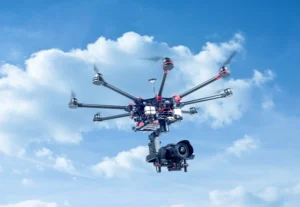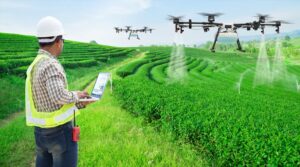Impact of Drones on the Job Market
Over the past decade, drones have become increasingly popular due to their wide range of applications in various industries, including photography, agriculture, delivery services, and infrastructure inspection, among others. Drones, which are also known as Unmanned Aerial Vehicles (UAVs), are essentially flying robots that can be remotely operated or flown autonomously using software-controlled flight plans.
While the increasing use of drones has revolutionized several industries, it has also raised concerns about the impact of drones on the job market. In this article, we will explore the impact of drones on the job market and how it has affected various sectors.
The rise of drones has created new job opportunities in the UAV industry, including drone pilots, engineers, and software developers. These jobs are essential for the development, deployment, and maintenance of drones. The increasing demand for drone services has led to the creation of new companies that specialize in drone operations. These companies require skilled professionals to manage the operations and provide services to clients.

However, the use of drones has also led to the displacement of traditional jobs, particularly in the field of aerial photography and videography. Drones equipped with high-quality cameras have made it easier to capture aerial images and videos, which were previously done by helicopter or airplane pilots. This has led to a reduction in the demand for traditional pilots, and many have lost their jobs.
Similarly, drones are also impacting the delivery industry. Drones have the potential to revolutionize the delivery industry by enabling faster, more efficient, and cost-effective deliveries. Companies like Amazon and Google have already started testing drone delivery services. However, the widespread adoption of drone delivery services could lead to the displacement of delivery drivers and courier services.
Moreover, drones have also impacted the agriculture industry. Drones equipped with sensors and cameras can be used to monitor crop health, identify pests and diseases, and optimize crop yields. This has led to the development of new jobs, such as drone operators and data analysts, but it has also led to the displacement of traditional farming jobs.
On the other hand, drones have also created new job opportunities in the infrastructure inspection industry. Drones equipped with high-resolution cameras and sensors can be used to inspect bridges, buildings, and other structures. This has led to the creation of new jobs, such as drone pilots and inspectors, but it has also led to the displacement of traditional inspectors.
Overall, the impact of drones on the job market is mixed. While drones have created new job opportunities in the UAV industry, they have also led to the displacement of traditional jobs in several sectors. However, the net impact of drones on the job market is still unclear, and it will depend on how quickly and widely drones are adopted in various industries.

In addition to impacting the job market, drones also raise concerns about safety and privacy. Drones can be dangerous if they are not operated safely and can cause injuries or damage to property. Moreover, drones equipped with cameras can potentially invade people’s privacy if they are used to capture images or videos without their consent. The increasing use of drones has led to the development of regulations to ensure their safe and responsible use.
Furthermore, the increasing use of drones has also led to concerns about the potential negative impact on the environment. Drones require batteries to operate, and the production and disposal of these batteries can have significant environmental consequences. Moreover, the use of drones for delivery services could lead to an increase in air traffic, which could have negative impacts on air quality and noise pollution.
Despite these concerns, the potential benefits of drones cannot be ignored. Drones have the potential to revolutionize several industries by providing faster, more efficient, and cost-effective services. Drones can be used to perform tasks that are dangerous, time-consuming, or difficult for humans, such as search and rescue missions, firefighting, and monitoring wildlife.
Moreover, the increasing demand for drone services has led to the development of new technologies and innovations. For example, companies are developing drones that can operate autonomously, avoiding obstacles and navigating complex environments. This could lead to the development of new job opportunities in the field of artificial intelligence and robotics.
In conclusion, the impact of drones on the job market is complex, and it is difficult to predict its long-term effects. While drones have the potential to create new job opportunities in the UAV industry, they have also led to the displacement of traditional jobs in several sectors. Moreover, drones raise concerns about safety, privacy, and the environment. It is essential to ensure that the adoption of drones is done responsibly and with proper regulations in place to ensure their safe and ethical use.
As the use of drones continues to grow, it is important to focus on the development of new skills and knowledge that are relevant to the UAV industry. This includes training programs for drone pilots, engineers, software developers, and data analysts. Moreover, it is crucial to develop regulations and policies that balance the potential benefits of drones with their potential negative impacts on society, the economy, and the environment.
In conclusion, drones have the potential to revolutionize several industries and create new job opportunities, but their adoption should be done responsibly and with proper regulations in place. As the UAV industry continues to evolve, it is essential to stay informed about new developments and advancements in the field to ensure that the potential benefits of drones are realized while mitigating their potential negative impacts.











